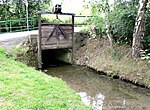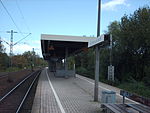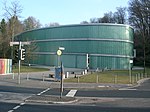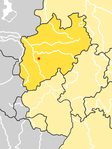Mettmann Stadtwald station
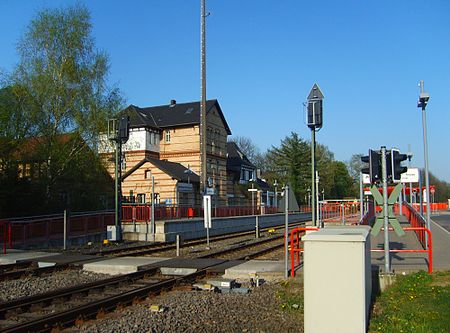
Mettmann Stadtwald station is located in the town of Mettmann in the German state of North Rhine-Westphalia at the end of a fragment of the Düsseldorf-Derendorf–Dortmund Süd railway, opened by the Rhenish Railway Company. The line and the station were opened on 15 September 1879. It was originally called Mettmann, but was renamed to its current name on 26 September 1999. The line is served by line S 28 of the Rhine-Ruhr S-Bahn. The station is served by line S 28, running between Mettmann Stadtwald and Kaarster See, operating every 20 minutes during the day. Two out of three services run to/from Wuppertal Hauptbahnhof.It is also served by eight bus routes operated by Rheinbahn (some with Kreisverkehrsgesellschaft Mettmann): SB68 (60 minute intervals), O10 (60), O11 (irregular), O13 (20), 742 (20–60), 745 (30–60), 746 (20) and 749 (60).
Excerpt from the Wikipedia article Mettmann Stadtwald station (License: CC BY-SA 3.0, Authors, Images).Mettmann Stadtwald station
An der Regiobahn,
Geographical coordinates (GPS) Address Nearby Places Show on map
Geographical coordinates (GPS)
| Latitude | Longitude |
|---|---|
| N 51.250818 ° | E 6.987876 ° |
Address
An der Regiobahn
An der Regiobahn
40822 , Goldberg
North Rhine-Westphalia, Germany
Open on Google Maps


